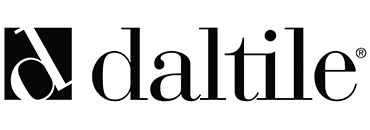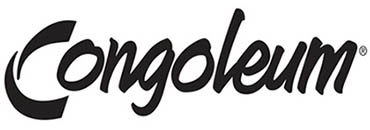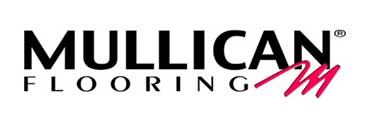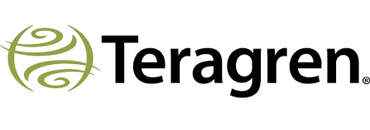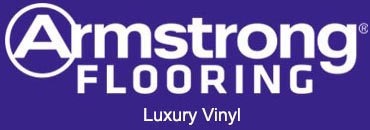
Scratching the surface of lvt - let's find out what's underneath
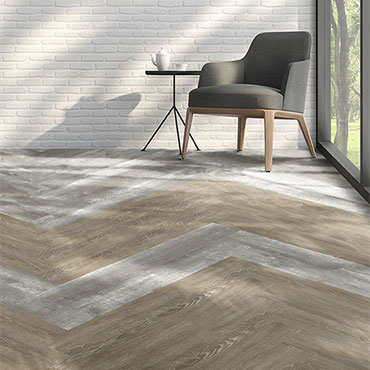
When was the last time this happened to you? You’re strolling around, maybe looking for a place to have dinner, when all of a sudden you notice everybody seems to be carrying the same backpack. Or — in a bunch of store windows you see this one particular gizmo that (conveniently!) keeps the charge port on your phone from getting clogged and destroyed by pocket lint or junk in your purse. Meanwhile, here comes the thematic leap:
LVT is kind of like that. If you don’t know, LVT stands for Luxury Vinyl Tile. What we’re pretty sure you do know: LVT is that cool-looking, hard-surface flooring it seems like everybody suddenly has, or wants, or is asking about. Plenty of trends are hype-based and fade back into obscurity as quickly as they appear.
LVT is definitely not one of those. It’s the kind of trend that took off because LVT is a fantastic product, with real benefits. We’ll mention a few of them: It’s a very cost-effective flooring solution. It looks terrific — you’ll find a myriad of great-looking designs and color options (and we specifically used the word “myriad,” because there are absolutely tons). It’s super-easy to maintain. It’s durable. Put simply, it’s a very good product.
WE’RE BASICALLY TALKING ABOUT NEXT-GEN VCT, RIGHT?
Sticking to the proverbial nutshell, that would probably be fair to say. VCT (which stands for Vinyl Composition Tile) has long been in need of a serious upgrade — given that it provokes reactions from most people ranging from the low-key “Booor-ing,” to something more frantic, such as: “I am trapped in a hellish, institutionalized landscape from which I shall never escape.”
The fact is, VCT is a pretty unattractive product. It’s also one that actually requires maintenance pretty much the day it’s installed. We’re talking, before anybody can even set foot on it. Not to mention that by “maintenance,” we mean six coats of wax — and once that wears down the old stuff has to be taken off with chemicals. Quite possibly nasty ones — in a school, let’s say, or in a senior living facility — which can have a negative impact on air quality. Then you have to put down six more coats of wax. Suffice to say, LVT is way better-looking, more durable, and won’t require anywhere near the effort VCT does from your maintenance staff. Or mess with your indoor air quality.
LVT SOUNDS LIKE THE PERFECT PRODUCT
It’s a great product, and that’s why we’re talking about it. But nothing is perfect, as you certainly are aware. Clearly, at some point you had to know the other shoe was going to drop. Well, here it is. In this case, however, the other shoe isn’t really that bad, but all products come with trade-offs, and LVT is no exception.
The big trade-off is PVC. What is it that makes LVT look and act like a higher-end product than VCT? Simple: higher vinyl content. More vinyl increases durability, particularly in that it adds resistance to indentations and cracks from heavy traffic or falling objects. VCT is loaded with fillers like limestone and clay, making it actually kind of fragile. Thus the need for polishes. The durability benefits go hand-in-hand with the big aesthetic advantages to make LVT such an appealing product. And yes of course we know the conversation always starts with “how does it look?” We get it. It’s a design thing (and like we said — it looks good).
In any case, “higher vinyl content” essentially means more PVC. Of course, in today’s sustainability climate, PVC is sometimes unfairly thought of as a dirty word. Three dirty letters, really, if you feel like splitting hairs. The point is, as you make choices about the products you want to put on your floors, you’ll need to weigh the pros and cons.
Keep in mind that simple formulations about sustainability tend to reduce complex interdependencies between ingredients, industrial processes, human factors, and a whole bunch of other elements into simple platitudes. These can often miss the forest for the trees (to use a green-sounding phrase!). If you take nothing else from this blog post (entertainment value aside, naturally), we’d encourage a focus on this last section:
A BROADER POINT ABOUT SUSTAINABILITY
People throw around the phrase “recycled content” in conversations about sustainability. Recycling in general, and recycled content in particular, are laudable considerations in any broad-based sustainability approach. But with an eye on the complex interdependencies we noted above, here’s an important question: How do you know what’s in the recycled content of the LVT you’re buying? We mean precisely, and here’s why — new PVC is better from an environmental perspective than old PVC. Why?
For one thing, because contemporary manufacturing standards are more stringent in terms of allowable toxicant levels. When we say “toxicant” what do we mean? Stuff like lead — and we all know lead is bad. Which is why it’s completely gone from newly-manufactured PVC products. Hence our question about content transparency: Any material being recycled is by definition not new. So, what’s in it? You probably won’t know (often there’s no way to know). Which means, there could be lead in it. Or something else you won’t like.
One last thing to consider: How did this recycled content come to exist? We’re interested in the “human factors” we mentioned earlier — because plenty of recycled content is generated in countries with far lower health and safety standards than would be typical in the United States, or Europe, or Japan (among others). So, in some cases, unprotected (and probably poorly paid) workers are picking through stacks of discarded (and possibly toxic) old material to hand-separate the bits of plastic suitable for recycling from the rest of the random debris.
Plenty of recycled PVC is sourced from demolished buildings — and lots of it comes from the insulation used in old wiring. It’s easy to see where this can create some real problems. Just think about what might be in a plastic manufactured 40 (or 50, or 60!) years ago for use inside the walls of a building. Standards in those days were notoriously lax even for products a child might handle on a daily basis. As for this stuff — once a building opened to the public, nobody was presumed to be messing with it at all, other than for an occasional repair.
The goal here is in no way to encourage high-horse positions, or shame manufacturers. That’s just grandstanding. Fact is, products like LVT tend to become trendy more often than not because they’re good, not just because they’re hyped. They do offer end users something of real value. LVT certainly does. But the fast-moving bandwagon is usually way out in front of the detailed, nuanced information. That shows up later, if at all.
We like nuance. We love it! We really do believe in the old adage, Knowledge Is Power. The more you know, the better prepared you’ll be to make good decisions. About which products are right for you, for your company, and for your customers.
learn more at Milliken Commercial LVT
